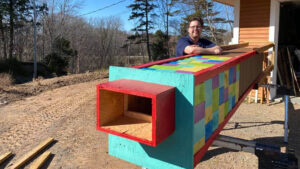
I made a Chimney Swift Bird Tower in Spring 2021. Basically, a faux chimney to give Chimney Swift Birds a safe sheltering place. They are an endangered species of bird.
While visiting Wolfville, Nova Scotia at the farmer's market. I noticed a chimney structure that I thought could be a pizza oven exhaust. It's in the park next to the library. There was information posted about the chimney being a Chimney Swift Bird Tower. Daniel is more informed on the environment than I am. So I asked him more about it. It intrigued me.
Upon researching, we realized that the Chimney Swift Birds are depleting in numbers as their habit is being taken away. Generally, they would prefer hollowed-out trees but in forestry, some birds have resorted to living in chimneys.
Daniel has planted 100's of trees on the grounds and with it, many of the trees and shrubs require pollination. Since planting the trees, birds have returned and some are living year-round now. So I wondered, what can I do to do a chimney swift tower knowing the one in the park is a mock chimney that has a flock?
The rush is to get this made and up before the Chimney Swift Birds return from Migration which is approximately the 3rd week of April for Nova Scotia.
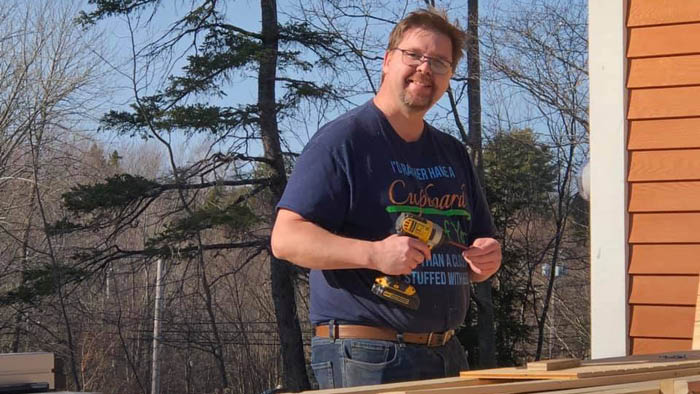
I found plans online that are downloadable if you look on Google for them.
- It's 12 feet long made up of 3 sections that are screwed together.
- The interior of the plywood I have scored with small grooves to give the birds footing. The birds cling to vertical surfaces but if there is nothing to cling to, they cannot stay.
- The interior has to be unobstructed so you have to make sure the screws do not go through to the inside of the surface so the birds don't get injured.
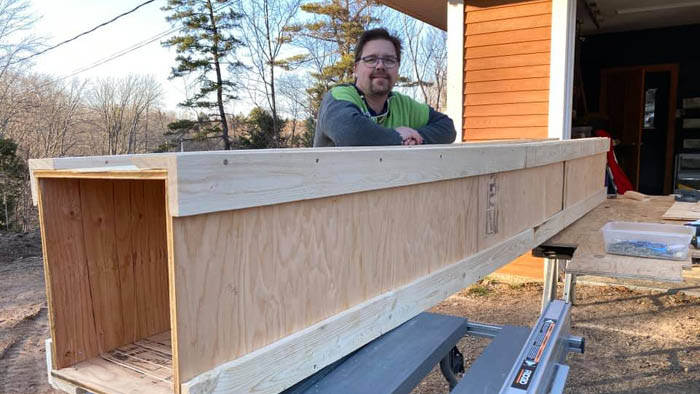
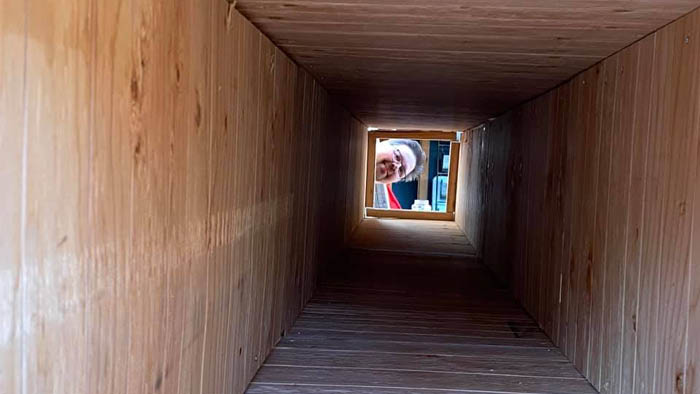
The bottom of the chimney needs ventilation.
- The birds need airflow from the bottom so the air can travel through.
- The ventilation plate also prevents preditors from being able to sneak up from the bottom. So the holes are ½" diameter drilled like a grid.
The tower box is 12 feet long without including the support beams to get it to go higher. The box needs to be raised to a minimum of 3 feet from the ground surface to allow airflow. So you don't want to plant graces or anything under the tower to prevent the air from moving.
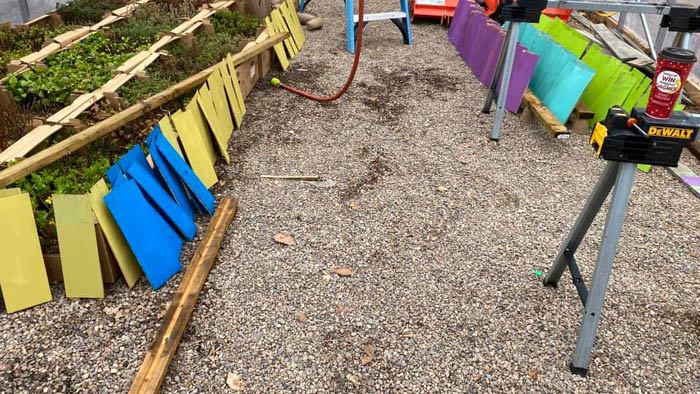
In keeping with traditional Nova Scotia, we decided to use shakes for the top 4 feet of the tower. We used prefab faux barn board panels that are paintable. That was used on the bottom 8 feet of the tower.
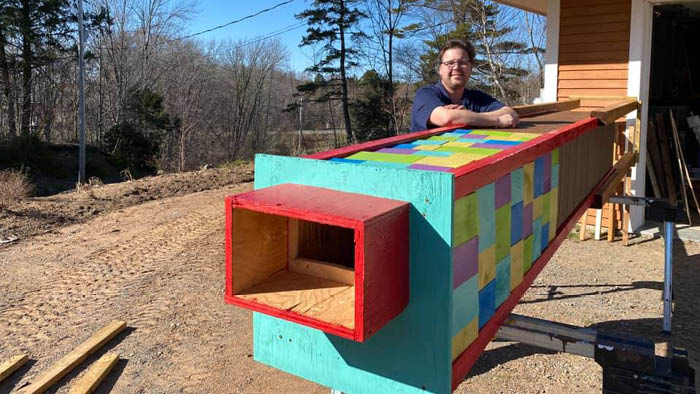
So the outside of the box has the faux barn board and a additional padding at the top to allow the shakes to sit flush. The shakes were specially painted and cut to fit. They were stapled into position with 6" overlap.
The top of the chimney has to be a certain size to allow the birds to have some shelter but enough room to come and go. It is 13" long by 8" wide opening. I didn't paint inside the opening so the birds have access to wood without any paint to negotiate.
During the entire making, I was scared about the weight. Daniel and I could turn this over on the workhorses but once the main support beams when on, it was too heavy to lift on our own.
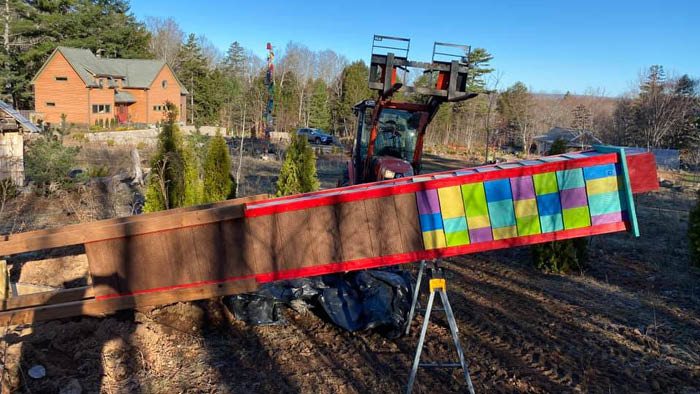
We used a tractor to move it to the butterfly garden. A pad of gravel was prepared and levelled. We used the tractor to pivot the tower upright.
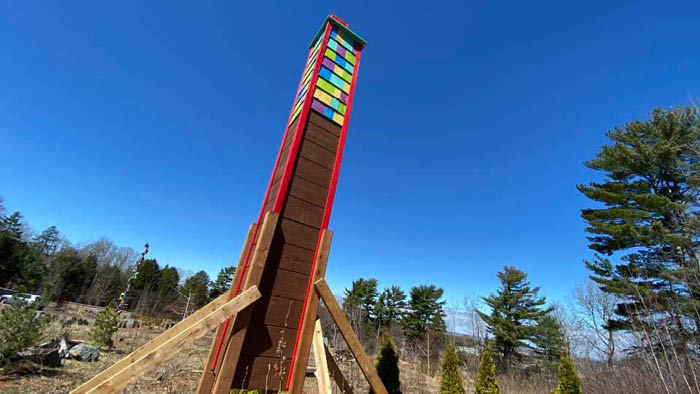
Once positioned, the tower was anchored with additional temporary supports. We used 16 bags of concrete mix to bury the base with additional wood beams we added that is inside the concrete base. The temporary supports will come off after 1 week. Daniel will be placing some armour stone boulders at the base for added weight to the base.
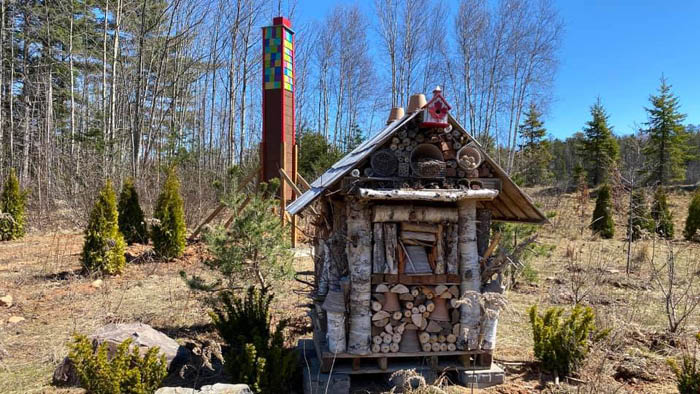
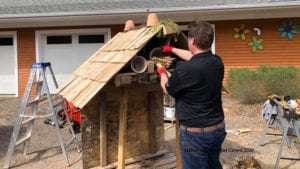
The tower sits about 40 feet back from the insect hotel. The insect hotel was the Spring 2020 project.
Realistically, we haven't seen an uptick in bugs but we need more diversity and that will come in time. However, Daniel noticed that ladybugs were crawling around the house on a warm day.
Now it's just a matter of time to see if chimney swifts can locate our tower. It's at the highest spot of our grounds. It sits 15 feet into the air. It's hard to know if it will work. With the bat population being decimated, we could lure in bats with this tower as well. We will never really know but if you never build it, you cannot really ever know.
More Ideas
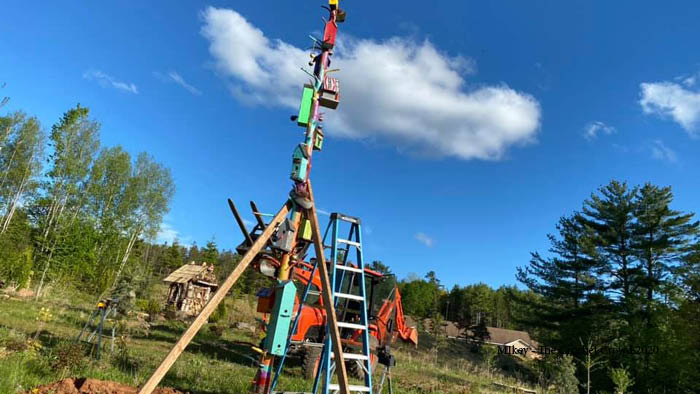
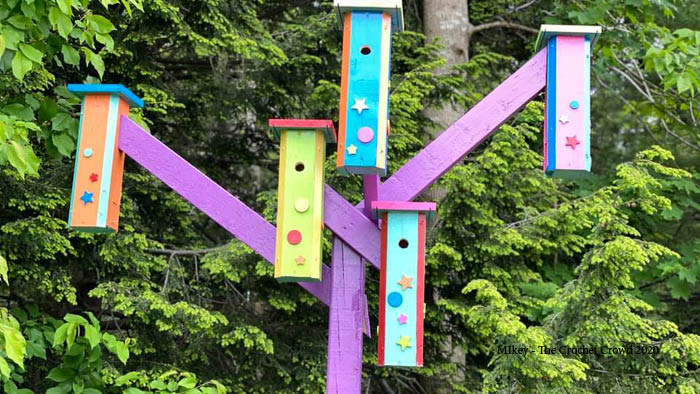
Judi Hartsfield says
I hope you get the chimney swifts to colonize your fantastic chimney swift tower! You’ve done a great job on the build and the amount of research you put into it must have been a lot fun to do. The payoff will definitely be worth it.
I just sold my home in a small old town in central Florida. It was built in 1886 and had a double brick fireplace and chimney. Over the many years we watched the chimney swifts arrive in spring, build nests, lay eggs, hatch and fledge their young, then leave; each year returning to my home to repeat the process. One of the most magical things to see is the flock circling high above the chimney at dusk in an ever-tightening spiral, slowly dropping toward the roof. Suddenly, at high speed they would drop into the chimney one-by-one.
I hope you get to experience the magic of the Spring breeding cycle. Thank you for all you do to help preserve and conserve the native species on your beautiful property. Good luck with all your endeavors.
Mikey says
That sounds so exciting. Cannot wait to see if this is our new reality.
Carol R says
How wonderful!! I had never heard about them before.
Deborah says
love you Mikey! Yay for helping out the birds!